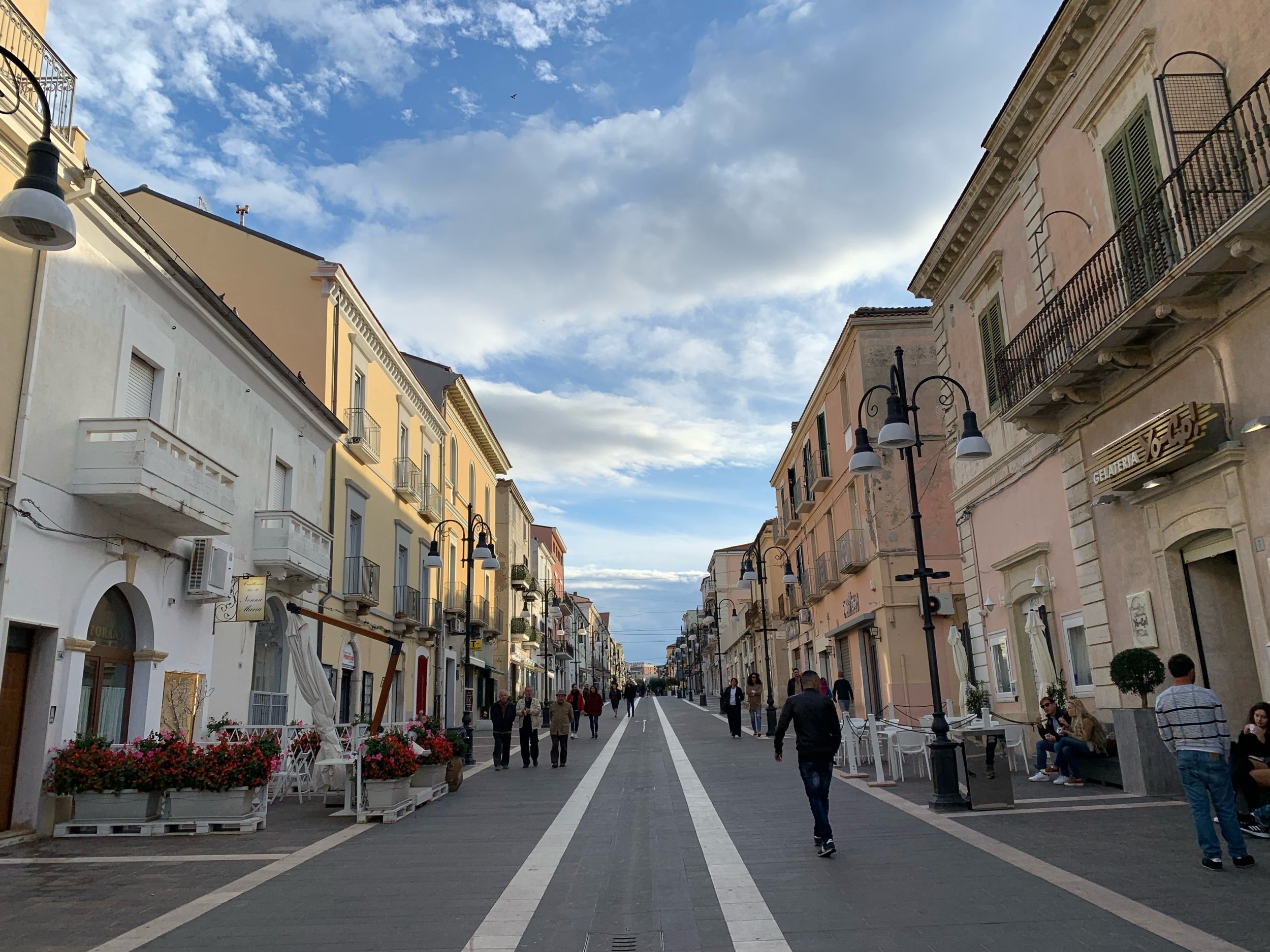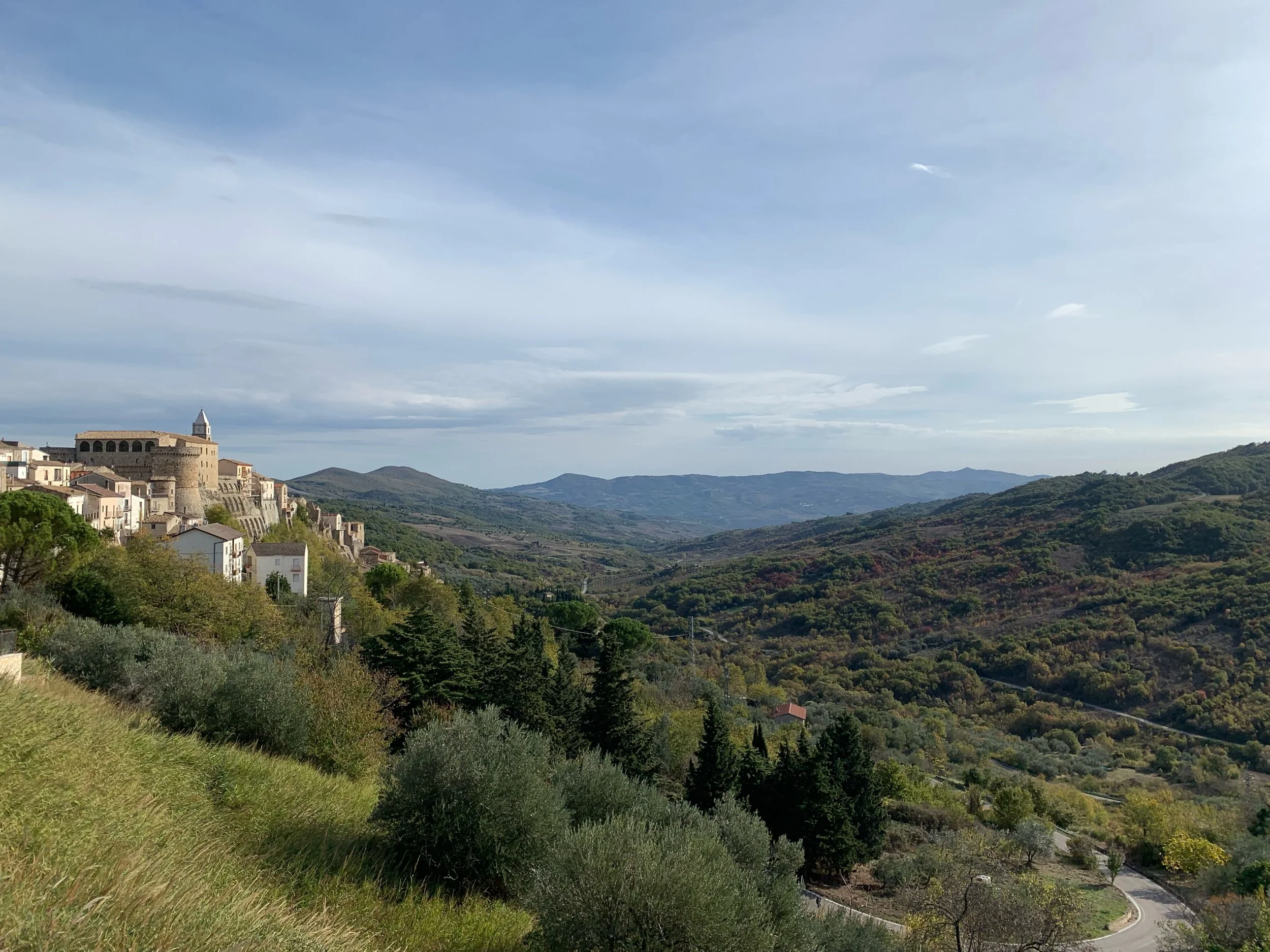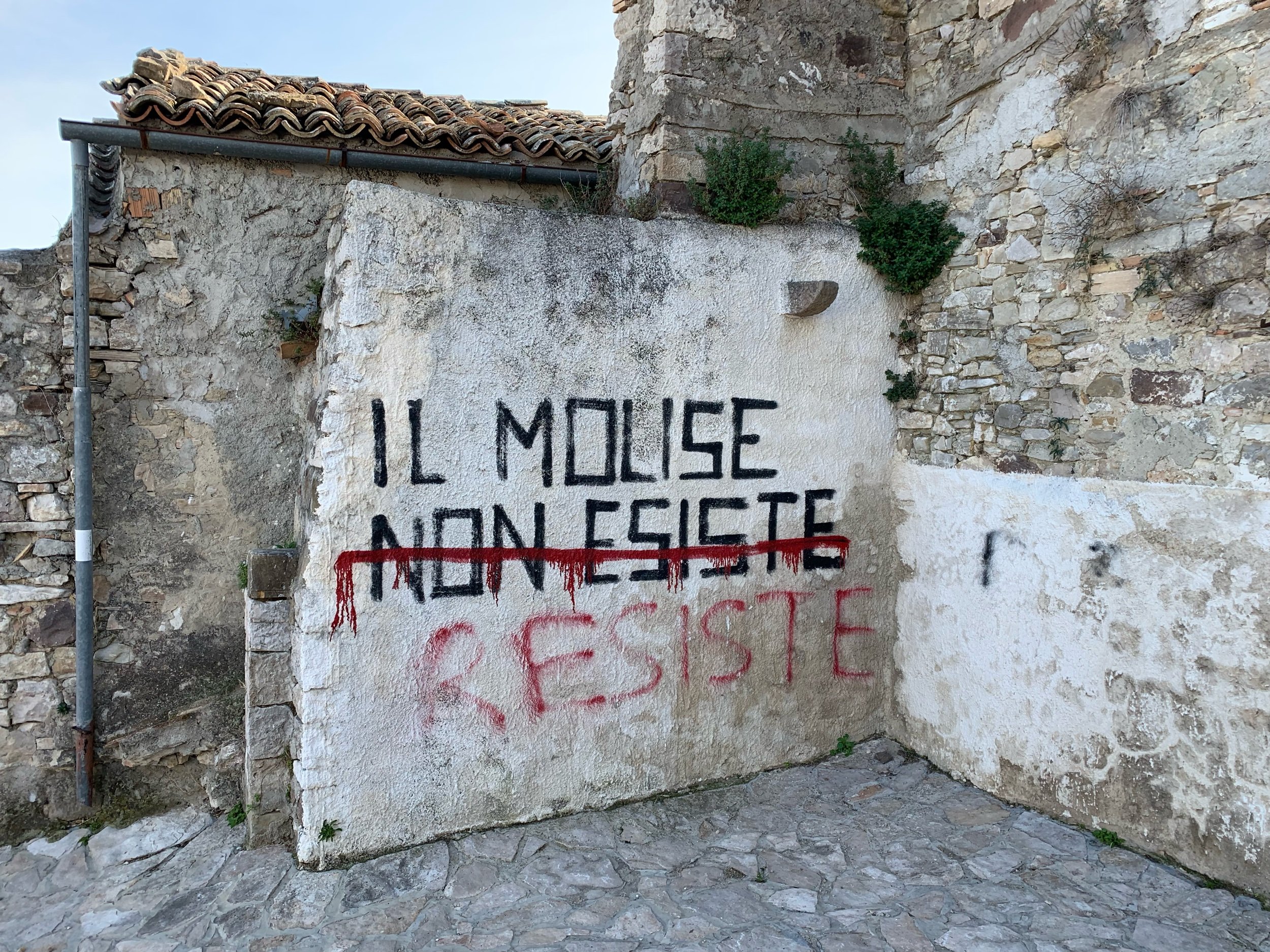Among the striking beaches, untouched hill top villages, mountainous topography and strong local traditions, the mystique of Molise continues to perplex even Italians with its quietly kept secret of its splendor to the outside world.
An afterthought, and often overlooked to all as part of its past Abruzzi e Molise region, to even today with total independence; they have remained well closed off from the other tourist stricken areas of Italy despite its beauty, history, approachability and enviable location.
After a spontaneous decision to include Molise in my travel plans, curiosity caught the best of me in this little corner of the unknown. Not only was I enlightened, I was absolutely smitten. I stumbled upon a kaleidoscope of colorful idiosyncrasies that make this place so very unique. From a constellation of exciting wineries to local food specialties, breathtaking sceneries and endless outdoor activities, there is truly something to offer anyone who is fortunate enough to explore this very special place.
Situated beneath Abruzzo to the North, above Puglia to the East, Lazio to the West and Campania to the South; Molise hugs the Adriatic coastline with its pristine, under crowded beaches and moves upwards as you make your way inland towards the peaks of the Apennines. Molise is Italy’s second smallest region and the second least populated. Here the climate varies greatly. The thin strip of land on the sea boasts a warm Mediterranean effect, while moving inland the climate is much more continental with its high elevations upwards of over 2020m (6628 ft). This makes it possible to swim in the sea and ski on the slopes in the same day! The region is divided administratively by two provinces (named after their major cities): Isernia and Campobasso, the latter being the region’s Capital.
On your journey to reach Molise, this is most easily accomplished by car. In order to move around the varied landscape with ease, reach places with limited accessibility, and fully experience the diversity Molise has to offer, a vehicle will give you the freedom to enjoy without difficulty or time restraints. Although Molise does not have an airport, all the surrounding regions do and I promise, you will relish in the gorgeous views you must pass through in order to reach this haven. To gage the distances from Termoli, a sea side gem and a must see for visitors, I will give the following estimates by vehicle: from Pescara airport in Abruzzo (105km), from Rome airport in Lazio (332 km), from Napoli airport in Campania (200km) and from Bari airport in Puglia (204km).
Starting your travels in Termoli you will be welcomed by sandy beaches, clear water, fresh seafood and picture perfect homes dressed aptly in florals and esthetic charm. Everything to be
experienced in Termoli can be done by foot. Park your car near the coastline and make your way along the beach and out to the view point on the pier. On your way back you will find the old fortress of Castello Svevo, the Belvedere Tower and several viewpoints all intertwined with the old village (Antico Borgo) of Termoli. A few minutes’ walk takes you to the main area of the town with unlimited shopping options amongst the streets leading up towards the highway. If you feel so inclined you can also take a ferry from the Porto Di Termoli to visit the nearby cluster Islands of Tremiti: San Nicola, San Domino and Di Capraia. For fresh seafood with a seaside view, Ristorante Svevia is a fantastic choice with a great wine list (svevia.it). A bit further inland, in the heart of the shopping area with home style cooking, Trattoria L’Opera is just a 7 min walk away (trattorialopera.com). For an overnight stay, Termoli has some fantastic options for air bnb’s, particularly Casa Del Pescatore for its seaside views steps away from the beach, and Residenza Sveva is a top option and value for those seeking a hotel experience.
A few km along the coastline you will find Campomarino, a quaint little town with even less traffic than Termoli and beautiful murals depicting the life of locals on every building you pass. Now we enter the beginning to wine country in Molise. Over 70% of the vineyard area is planted to red grape varieties. Montepulciano is the key player with Aglianico, Sangiovese, Cabernet Sauvignon, and Tintilia, with Merlot and Ciliegiolo following at a distance. For whites the main plantings are Trebbiano Abruzzese and Trebbiano Toscano with some interesting examples of Falanghina, Greco, Moscato Bianco, Bombino Bianco and Malvasia Bianca being made. Production is small with 5,000 ha of vines producing less than 300,000 hl of wine per year. Only about half of the production is bottled at the DOC level, falling into 1 of the four categories: Molise DOC, Biferno DOC, Tintilia Del Molise DOC and Pentro di Isernia DOC.
A few short minutes down the road you will find Via Ramitello Street which will lead you to the respected winery estate of Di Majo Norante. The family has deep roots here and has been making wine since 1800. Di Majo Norante produces their own wines from their grapes grown on over 85 hectares of vines. Wines of particular interest are their delicious Tintilia bottling, their Metodo Classico Falanghina and a special passito produced from Moscato Bianco. The family is part of history in this area, as the Norante family palace was used to hide prisoners during WW2. British and American soldiers overtook the property when Domenico Norante was only 14 years of age; holding German prisoners captive in this temporary base. You can still see their artwork today. The ruins of a nearby country villa called Ramitelli (Rami meaning woods and telli (vitelli) meaning little cows) takes the name of both the street and their Ramitello wine known the world over. This base and ancient ruins was depicted in the film “Red Tails” as it tells the true story of when the old aircraft base was used by the first African American to fly an aircraft in the Second World War. Upon reservation, at this historic winery you can enjoy tastings, lunch and a tour of the vineyards and cellar.
For home cooked eats you can’t go wrong with the local favorite of Trattoria da Nonna Rosa di L’Abbate in Campomarino on via Biferno. Named after the major river Biferno and also the name of the major wine appellation Biferno DOC, you will have to google this spot as this small space does not have a website. Another winery of note in the area is the family owned winery of Tenuta Marta Rosa just 10 minutes away near the small village of Nuova Cliternia. This small town is worth passing through if you are envisioning an autumn trip to Molise as they have a festival in November with a tasting of all the local wineries, local food and vendors and family activities. The next winery worth a visit is Cantine Catabbo on route to Guglionesi where you can enjoy a meal at the Michelin Starred family style restaurant Ribo. Cantine Salvatore is the last winery in this area before we venture away from the coast and inland into the mountains.
A stop over to visit Azienda Agricola Claudio Cipressi Vignaiolo is worth the slight detour out of town. In San Felice del Molise area, this small organic winery of 12 hectares is Tintilia focused with a dedication to preserving the rich heritage of this grape through research and experience to giving it the opportunity to show its best.
An hour away we now find ourselves in the Capital of Campobasso. An old city with a series of staircases and twists and turns which make it all the more charming while you enjoy exploring. High above the town you can park and take the short walk up to visit Castello Monforte and Santuario di Santa Maria del Monte surrounded by a green park space and incredible views. For some regional food visit Miseria e Nobilta which is set in an 18th century palazzo with a humble yet luxurious feel. The air bnb of La Terrazza takes the cake in value for money with again gorgeous rooftop views (bbterrazza.it). From the Castle to the restaurant to your resting place about 10 mins by foot is all you need.
Towards the exit of Campobasso you find a small dirt road which will take you up to the small hilltop villages that shine like gems in the crown of this rich and diverse region; Civitacampomarano, Bagnoli del Trigno, and Agnone. To Civitacampomarano it is about 40 mins from Campobasso. This small town is absolutely worth the trouble and one of my favorite towns in all of Italy. This village is home to less than 400 people yet displays so much life and character. Italian street Artist Alice Pasquini has displayed her impressive, colorful works all throughout the village fascinating visitors and giving new life to this historic center. Every summer during CVta Street fest she returns to create some new magic in the village. Guests can also visit the 13th century Angevine Castle, the 11th century Church of Santa Maria Maggiore and the Gothic Church of Santa Maria delle Grazie.
Another 40 mins North, Bagnoli del Trigno will make getting lost a pleasure as time eludes you in the fairytale like towns of the Molise countryside. With hardly more residents than the previous counterpart, at 700 people the town is quiet, yet full of unexpected beauty. Aptly nicknamed the “Pearl of Molise”, as one of the most beautiful towns in the entire region. The
colorful town winds around a steep boulder of limestone on which the ancient Lombard Castello Sanfelice lays. You can also visit the Church of San Silvestro and take in the scenery that surrounds you. There is a nearby hotel called Domus, should you decide to stay and relax while enjoying the signature view of the town from afar (domushotelbagnoli.it).
The final gem in our journey is Agnone. The hill top town is known as the city of Art with its marble portals, balconies, churches and the ancient Marinellis’ Bell Foundry; the symbol of the town. Bells have been made here for 8 centuries by the Marinelli family, founded in 1040 it is Italy’s oldest family business and amongst the oldest in the world. The entire process is handcrafted and their clients include the Vatican, The Roman Catholic Church and the bell tower of the leaning tower of Pisa. Worthy local accommodations include Agriturismo Masseria Santa Lucia (santaluciaagnone.com) and Santo Stefano dei Cavalli (santostefanodeicavalli.com), where you can enjoy horseback riding local Appaloosa horses on this small family property. A visit during December gives the opportunity to experience Ndocciata, a special town wide event falling on both December 8th and December 24th. Fire torches are carried through the town by locals in costume... the largest event related to fire in the world. The event is steeped in local tradition linked to the winter solstice and the sound of the flames is said to ward off evil spirits.
For the outdoor enthusiasts, Molise is the perfect place for hiking, climbing and mountain biking during the summer months while enjoying skiing and snowboarding during the winter season. Both Campitello Matese and Capracotta offer a resort with tours year round both on foot, spoke and on the slopes. For those looking to have a Molisian experience without the added stress of driving and planning, molisecuisine.com takes the guesswork out of your planning. They offer traditional cooking classes and wine tours, visits to cultural sites and even guided truffle hunting in autumn.
For the history buff, a visit to any one of these ancient Samnite civilization towns is possible: Sepino, Vastogirardi, and Campochiaro with Pietrabbondante of particular interest; rich in well preserved temples, archeological sites, ampetheatres and artifacts, excavations still exist today.
Local food specialties not to be missed in your travels include: maccheroni alla chitarra (egg pasta), caciocavallo di Agnone, caratelli pasta, and cipolla di Isernia. This sweet onion specialty is perfect for frittatas, (and also highlights the June 28th and 29th onion festival), formaggio di pietracatella (mountain blend of cow, goat and sheep yellow rind soft raw cheese), stracciata, local truffles and Ventricina di Montenero di Bisaccia (renowned sausage from Campobasso).
Molise is a cultural treasure still preserved, and kept raw through the ages with an ocean of experiences waiting to be had. A place where time seems to both escape you, yet stand still in the constant rhythm of its lively pulse.
My Molise travel guide for decanter can be found here:
https://www.decanter.com/wine-travel/molise-a-wine-lovers-travel-guide-470577/



















